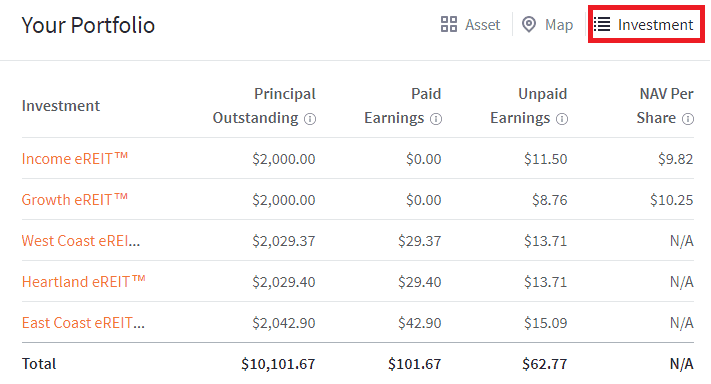
The company's dividend payout ratio is an indicator of its financial strength. This is the percentage of net income that a company distributes as dividends. Stockholders will receive more dividends if the payout ratio is high. You should look for companies with high payout rates in an age where shareholders' money is the king. How to calculate a dividend payout percentage to determine the company's strength.
Dividend payout ratio is a measure of a company's sustainability
The Dividend Payout Ratio is a financial indicator that shows whether a company's business model can be sustained. While high dividend yields can be attractive, if the company suddenly has to cut the dividend, it could lead to a decrease in the yield or a loss in capital. A high DPR could signal a red flag.

It is a measure of a company's financial strength
Owners are concerned about the financial stability of their business. The ability to manage costs and maximize efficiency is key to a company's financial strength. There are many financial metrics that measure the strength of a company. How can you determine which metrics are most important? Start by identifying your key drivers, such as sales growth, profitability and control of costs. These factors will help determine the metrics you should use.
It is a measure for maturity
The capability-maturity (CMM), is a description of the process areas and the measures used to determine an organization's maturity. One of these areas is project integration management, planning monitoring and control. This process maturity index is applicable to different industries, as well as to different continents. These indexes are related to organizational leadership styles. Companies that achieve a high level of maturity may be better equipped to handle more complex and uncertain environments.
It is a sign of financial strength
Many people are concerned about a company's financial health. Companies thrive on efficiency and cost control. How can one tell if a company's financial health? The type of business, the stage it is at in its lifecycle, as well as its goals and economic environment, will all impact how this answer works. A company's financial health can be assessed by measuring three key areas, namely sales growth, profitability and cost control.

It is a measure sustainability
The ecological footprint is an indicator of sustainability. It combines economic and environmental factors. This is the area in which there are water ecosystems and productive land that are needed to produce resources or assimilate wastes. An ecological footprint is a way of comparing the value of different project. To assess the environmental impact of a building, for example, we must calculate how much it will take to build it.
FAQ
What are the advantages to owning stocks?
Stocks are more volatile that bonds. The value of shares that are bankrupted will plummet dramatically.
If a company grows, the share price will go up.
In order to raise capital, companies usually issue new shares. This allows investors the opportunity to purchase more shares.
Companies use debt finance to borrow money. This gives them access to cheap credit, which enables them to grow faster.
If a company makes a great product, people will buy it. The stock's price will rise as more people demand it.
As long as the company continues to produce products that people want, then the stock price should continue to increase.
Who can trade on the stock market?
The answer is yes. There are many differences in the world. Some people are more skilled and knowledgeable than others. They should be rewarded for what they do.
Trading stocks is not easy. There are many other factors that influence whether you succeed or fail. If you don’t have the ability to read financial reports, it will be difficult to make decisions.
These reports are not for you unless you know how to interpret them. Each number must be understood. Also, you need to understand the meaning of each number.
This will allow you to identify trends and patterns in data. This will allow you to decide when to sell or buy shares.
This could lead to you becoming wealthy if you're fortunate enough.
How does the stock market work?
Shares of stock are a way to acquire ownership rights. Shareholders have certain rights in the company. He/she can vote on major policies and resolutions. The company can be sued for damages. And he/she can sue the company for breach of contract.
A company can't issue more shares than the total assets and liabilities it has. This is called capital sufficiency.
A company with a high capital adequacy ratio is considered safe. Companies with low ratios are risky investments.
What is a Stock Exchange and How Does It Work?
A stock exchange allows companies to sell shares of the company. This allows investors and others to buy shares in the company. The market sets the price for a share. It usually depends on the amount of money people are willing and able to pay for the company.
Companies can also raise capital from investors through the stock exchange. Companies can get money from investors to grow. They do this by buying shares in the company. Companies use their money for expansion and funding of their projects.
Stock exchanges can offer many types of shares. Some are called ordinary shares. These are most common types of shares. Ordinary shares are traded in the open stock market. The prices of shares are determined by demand and supply.
There are also preferred shares and debt securities. Priority is given to preferred shares over other shares when dividends have been paid. The bonds issued by the company are called debt securities and must be repaid.
Why is a stock called security.
Security is an investment instrument, whose value is dependent upon another company. It could be issued by a corporation, government, or other entity (e.g. prefer stocks). The issuer can promise to pay dividends or repay creditors any debts owed, and to return capital to investors in the event that the underlying assets lose value.
What is the difference in marketable and non-marketable securities
The principal differences are that nonmarketable securities have lower liquidity, lower trading volume, and higher transaction cost. Marketable securities can be traded on exchanges. They have more liquidity and trade volume. Because they trade 24/7, they offer better price discovery and liquidity. This rule is not perfect. There are however many exceptions. For example, some mutual funds are only open to institutional investors and therefore do not trade on public markets.
Non-marketable security tend to be more risky then marketable. They typically have lower yields than marketable securities and require higher initial capital deposit. Marketable securities are usually safer and more manageable than non-marketable securities.
For example, a bond issued by a large corporation has a much higher chance of repaying than a bond issued by a small business. The reason is that the former is likely to have a strong balance sheet while the latter may not.
Because of the potential for higher portfolio returns, investors prefer to own marketable securities.
What is security on the stock market?
Security is an asset that generates income. Most common security type is shares in companies.
There are many types of securities that a company can issue, such as common stocks, preferred stocks and bonds.
The earnings per shares (EPS) or dividends paid by a company affect the value of a stock.
If you purchase shares, you become a shareholder in the business. You also have a right to future profits. You receive money from the company if the dividend is paid.
Your shares can be sold at any time.
Statistics
- "If all of your money's in one stock, you could potentially lose 50% of it overnight," Moore says. (nerdwallet.com)
- Even if you find talent for trading stocks, allocating more than 10% of your portfolio to an individual stock can expose your savings to too much volatility. (nerdwallet.com)
- Ratchet down that 10% if you don't yet have a healthy emergency fund and 10% to 15% of your income funneled into a retirement savings account. (nerdwallet.com)
- US resident who opens a new IBKR Pro individual or joint account receives a 0.25% rate reduction on margin loans. (nerdwallet.com)
External Links
How To
How to make a trading plan
A trading plan helps you manage your money effectively. It will help you determine how much money is available and your goals.
Before creating a trading plan, it is important to consider your goals. You may want to save money or earn interest. Or, you might just wish to spend less. If you're saving money you might choose to invest in bonds and shares. If you're earning interest, you could put some into a savings account or buy a house. Perhaps you would like to travel or buy something nicer if you have less money.
Once you have a clear idea of what you want with your money, it's time to determine how much you need to start. This depends on where you live and whether you have any debts or loans. It's also important to think about how much you make every week or month. Your income is the amount you earn after taxes.
Next, make sure you have enough cash to cover your expenses. These include rent, bills, food, travel expenses, and everything else that you might need to pay. Your total monthly expenses will include all of these.
The last thing you need to do is figure out your net disposable income at the end. This is your net disposable income.
Now you've got everything you need to work out how to use your money most efficiently.
To get started with a basic trading strategy, you can download one from the Internet. Or ask someone who knows about investing to show you how to build one.
For example, here's a simple spreadsheet you can open in Microsoft Excel.
This is a summary of all your income so far. It also includes your current bank balance as well as your investment portfolio.
And here's a second example. This one was designed by a financial planner.
It will allow you to calculate the risk that you are able to afford.
Remember: don't try to predict the future. Instead, be focused on today's money management.